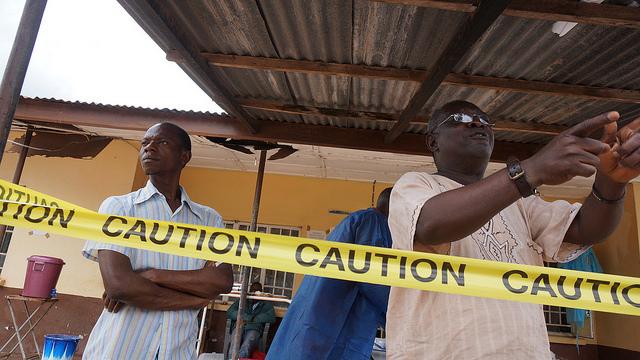The World Health Organization (WHO) yesterday filled in details on Guinea's new Ebola flare-up in the southern village of Koropara, noting that initial tests suggest the cases are part of a known transmission chain and not a new introduction from the animal population.
The report also highlights the challenge responders have, given that more than 100 of the 816 contacts identified so far are considered high risk.
In related news, a new study found that US travelers often didn't take recommended precautions before traveling to Ebola-affected nations at the height of the outbreak.
Cluster involves family members
The number of probable and confirmed deaths in the Guinea flare-up so far is at five. The first three likely Ebola deaths and a mother and 8-year-old daughter are all from the same family, the WHO said. The girl died at a treatment center, the fourth fatality, and her mother is seriously ill.
The most recent death involved a high-risk contact, a man who traveled to neighboring Macenta district to see a healer. That case was confirmed after the patient died. The WHO said 50 of the man's contacts have been identified, and more tracking and further case investigation is under way.
In Koropara, contacts include members of 107 households, and movements to and from the area are being restricted during medical monitoring. Teams began offering vaccination to contacts and contacts of contacts yesterday, and responders will conduct a door-to-door search for contacts and suspected cases in neighboring villages.
The WHO said local health officials have reactivated an emergency response system and added that several WHO experts and partners are on the ground to help with investigation, surveillance, contact tracing, social mobilization, and other efforts.
US travelers often skipped precautions
In the Ebola study, researchers said US travelers didn't often take recommended health precautions such as getting malaria prophylaxis and flu vaccination before traveling to Ebola-affected countries during the outbreak.
Researchers from New York City and the US Centers for Disease Control and Prevention (CDC) based their findings on about 4,200 people who were actively monitored from Mar 16, 2015, through Dec 29, 2015. They published their findings yesterday in a letter to Emerging Infectious Diseases.
Of the 4,200 people, 2,032 were US travelers to Ebola-affected countries. The authors found these levels of health precautions reported by US travelers: seeking pre-travel medical advice, 62.3%; receiving flu vaccination, 59.0%; and taking malaria prophylaxis, 41.3%. The latter two precautions are important steps to help rule out non-Ebola disease if fever develops.
Most people went to the region to see friends and family. Women were more likely to seek pre-travel advice than men were. US citizens were more likely than those from affected nations to seek medical advice beforehand and to use malaria prophylaxis.
Relief workers and those traveling for business were more likely to use recommended malaria prophylaxis, but the researchers noted that their receipt of pre-travel medical advice and flu vaccination was surprisingly low.
The team said public health agencies should work more closely with groups sending workers abroad, adding that low uptake of malaria prophylaxis warrants further investigation.
See also:
Mar 22 WHO statement on Guinea's Ebola cluster
Mar 22 Emerg Infect Dis letter

















